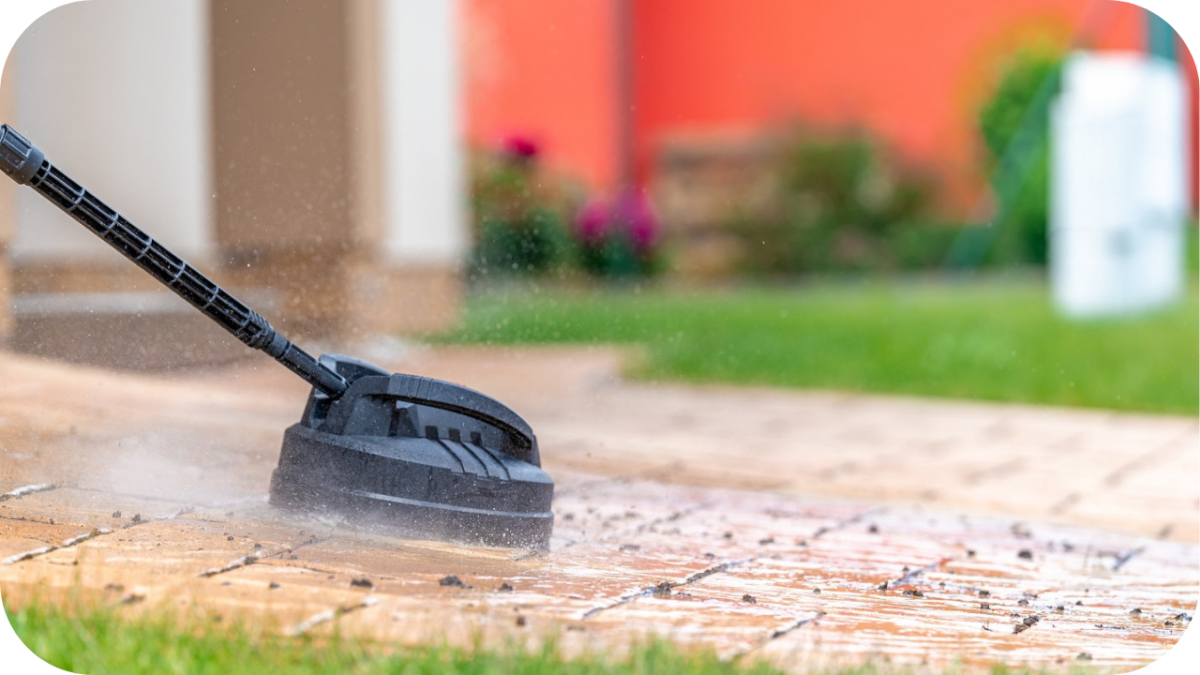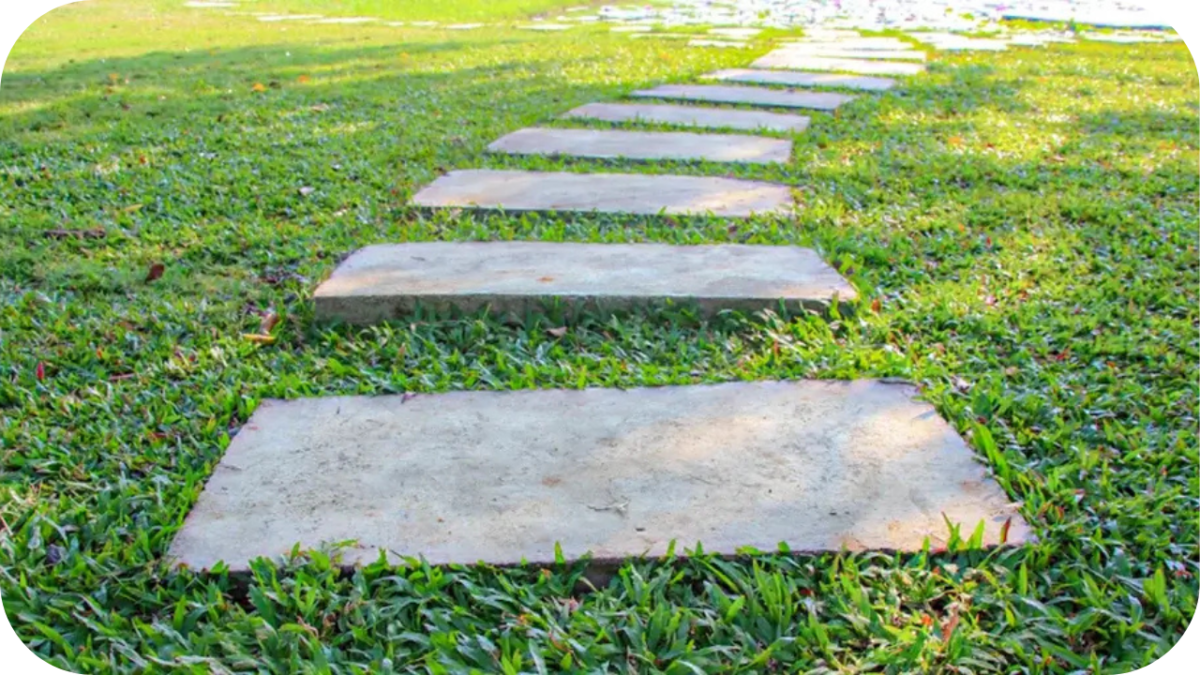How to Maintain Stone Paving in Australia: Weatherproof Tips That Work
Stone paving looks stunning when freshly laid, but Australia’s harsh sun, sudden downpours, and coastal air can wear it down fast if you’re not careful.
Whether it’s a sandstone courtyard in Sydney or a bluestone path in Melbourne, keeping your pavers in top nick isn’t just about looks, it’s about longevity. The good news? A few smart maintenance habits can save you thousands in repairs. Let’s walk through the essentials every homeowner should know.
1. Clean Regularly to Avoid Buildup
Regular cleaning is the first and most important step in keeping your stone paving looking its best. In Australia’s outdoors, leaves, dirt, and dust build up quickly, especially after windy days or storms. Left unattended, that debris can trap moisture and lead to stains, mould, or moss, particularly on porous stones like sandstone and limestone.
Use a soft-bristled broom to sweep your paving weekly and a low-pressure hose to rinse off grime. For deeper cleans, stick to pH-neutral detergents that won’t strip the stone’s natural finish. Avoid harsh chemicals like bleach or acidic cleaners, which can etch and dull the surface over time.
It’s also wise to steer clear of high-pressure washers unless you know your stone can handle it, too much force can chip edges or wear away sealant. A little elbow grease and gentle care go a long way toward keeping things fresh and tidy.
2. Reseal Periodically to Block Moisture and UV
Australia’s intense sun doesn’t just warm your patio, it slowly fades the natural colours in your stone. Add in heavy rain, morning dew, or coastal salt spray, and you’ve got the perfect recipe for staining, mould growth, or salt efflorescence. That’s where resealing comes in.
A good quality stone sealant acts like sunscreen and waterproofing combined. It helps protect the surface from UV rays, repels water, and makes cleaning much easier. For high-traffic areas or porous stones like travertine and limestone, resealing every 1–2 years is a safe bet. Denser stones like granite or quartzite can go a bit longer, around every 3 years.
You’ll know it’s time when water stops beading on the surface or when stains start soaking in more easily. Always clean thoroughly before resealing, and choose a sealant suitable for outdoor Australian conditions, especially one that offers UV resistance and breathability.
3. Tackle Stains Promptly
Spills happen, whether it’s red wine at a backyard BBQ, oil from the grill, or rust from outdoor furniture. But when it comes to natural stone, timing is everything. The longer a stain sits, the deeper it seeps into the surface, especially on porous stones like sandstone, limestone, or marble.
Act quickly by blotting (not scrubbing) the area with a clean cloth. Then reach for a stone-safe cleaner, look for products specifically labelled for natural stone, as these are pH-neutral and won’t degrade the surface. Steer clear of acidic cleaners like vinegar or lemon juice, which can cause permanent etching, particularly on limestone and marble.
For stubborn marks like rust, a poultice made from a specialised rust remover and an absorbent powder can help draw it out without damaging the stone. The key is to always check your cleaner’s compatibility first and test it in a small, hidden spot before going all in.
4. Choose the Right Cleaning Tools
Using the wrong cleaning gear can do more harm than good, even if your stone looks tough. Natural stone surfaces need a gentle approach, especially when dealing with softer varieties like travertine or sandstone.
Stick to non-metallic brushes or soft scrubbing pads that won’t scratch or wear down the stone’s surface. When it comes to cleaning products, always go for a pH-neutral solution designed for natural stone. These cleaners lift grime without reacting chemically with the stone itself.
Avoid harsh chemicals like bleach, ammonia, or vinegar. Although they may work well on tiles or concrete, they can strip sealants, discolour the surface, or cause etching. This is particularly risky with calcium-based stones like limestone and marble.
If you’re unsure, test any product or tool in a discreet corner before applying it across your paved area. When in doubt, less is more; gentle, regular care always wins out over heavy-duty fixes later.
5. Prevent Weeds and Ants in the Joints
Weeds sprouting between your pavers and ants building nests beneath them can quickly ruin the look and structure of your paved space. The good news? A bit of preventative maintenance goes a long way.
Start by brushing in polymeric sand or a quality jointing compound between your pavers. These products harden slightly when set, locking out weeds and deterring ants from digging through. Over time, weather and foot traffic can wear them down, so it’s worth topping them up every year or two, especially in high-use areas.
Drainage plays a big role, too. If water tends to pool or sit in joints, it creates the ideal environment for weeds to thrive. Make sure your paving slopes slightly away from buildings and drains freely after rain. The combination of tight joints and good runoff keeps your paved area cleaner, safer, and far less inviting to nature’s little invaders.
6. Protect Paving from Furniture Damage
Outdoor furniture looks great on stone paving until it starts leaving behind scratches, rust marks, or worn patches. The everyday drag of chair legs, especially during gatherings or rearranging, can scuff the surface over time. To avoid this, fit your furniture with non-rubber leg caps or gliders made from plastic, felt, or Teflon.
Rubber may seem safe, but in hot Aussie weather, it can break down and leave stubborn black stains on natural stone. Always lift, never drag, when moving heavy tables, lounges, or barbecues. For added protection, place rugs or outdoor mats in high-traffic areas like under dining sets or seating arrangements.
Just make sure they’re breathable and quick-drying to avoid trapping moisture underneath. These simple precautions can help preserve the clean, unblemished look of your stone, so your paving stays as polished as your patio style.
7. Watch for Salt or Pool Chemical Exposure
If your stone paving sits near a pool or along the coast, it’s under extra pressure. Salt from the ocean breeze or chlorine from pool splashes can break down sealants, cause discolouration, or even lead to surface erosion over time.
To stay ahead of the damage, give your paving a light rinse with fresh water every week, especially during summer when exposure is highest. This simple step helps wash away salt and chemicals before they start seeping in.
It’s also worth investing in a high-quality, salt-resistant sealant. These are designed to create a stronger barrier against corrosive elements without compromising the stone’s breathability. Reapply as recommended for your specific stone type and conditions, usually every 1–2 years for poolside or seaside locations.
Regular upkeep here isn’t just for looks. It protects your investment and keeps your stone paving strong and vibrant, even in the toughest Aussie environments.
8. Inspect for Damage After Extreme Weather
Australia’s weather can turn on a dime, from torrential rain to scorching heat in a matter of days. While your stone paving is built tough, extreme conditions can still take a toll. After major storms or prolonged heat waves, it’s wise to give your paved areas a once-over.
Look out for signs of movement like uneven surfaces, widened joints, or loose pavers. Heavy rain can wash away bedding sand and cause minor sinking, while extreme heat may cause expansion that loosens the joints. If left unchecked, these small issues can quickly turn into trip hazards or larger structural problems.
If caught early, the fix is often simple: a quick rebedding, joint refill, or spot reseal might be all that’s needed. Regular inspections after wild weather not only maintain the safety and appearance of your paving but also help you avoid the headaches and costs of major repairs down the track.
Bonus Tip: One Size Doesn’t Fit All, Know Your Stone
Different stones react differently to Australia’s wild weather, and treating them all the same can lead to early wear or costly damage. Knowing what you’re working with means you can tailor your maintenance and get the best out of your paving.
- Bluestone: Naturally durable with a clean, modern look. But over time, UV exposure can cause fading. Reseal every 1–2 years to preserve colour and protect against surface wear.
- Quartzite: Hard and highly stain-resistant, ideal for outdoor spaces. However, it can still absorb moisture. Apply a breathable sealant to guard against water damage and help with easier cleaning.
- Limestone: Softer and more porous, it’s easily marked by acidic cleaners and harsh scrubbing. Use gentle, pH-neutral products and seal frequently for added protection.
- Travertine: Beautiful but thirsty, it absorbs liquids fast. Clean spills immediately and seal well to prevent staining and discolouration.
By matching your maintenance to the specific stone, you extend its life, preserve its natural beauty, and avoid unnecessary repairs. Treat it right, and it’ll stand up to the Aussie elements for years to come.
Keep It Beautiful Year-Round
A little regular care goes a long way when it comes to stone paving. Small steps make a big difference, from cleaning and sealing to watching for wear after wild weather. By matching your maintenance to your stone type, you’ll keep it looking sharp and lasting longer.
For quality natural stone built for Australian conditions and expert advice to match, visit Splendour in Stone. We’re here to help you get the most out of every paved surface.





